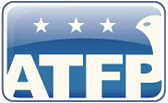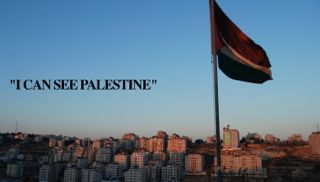| Office for the Coordination of Humanitarian Affairs (OCHA) |
1 July 2009
|
|
|
UNITED NATIONS Office for the Coordination of Humanitarian Affairs occupied Palestinian territory |
|
ThEThE hUmWEST BANK MOVEMENT AND ACCESS UPDATE
JUNE 2009 |
1. In the course of the past month the Israeli authorities have implemented several steps that have further eased the flow of Palestinian traffic to and from four West Bank cities: Nablus, Qalqiliya, Ramallah and Jericho. Initial field observations indicate that these measures have significantly reduced the amount of time required for Palestinians to access these cities.
Nablus City
- One of the seven checkpoints controlling access into the city (‘Asira Ash Shamaliya) is no longer staffed on a permanent basis and part of its infrastructure was removed; yet, two road gates (currently open) adjacent to the checkpoint remained in place and soldiers perform ad-hoc checks at them. While the other six checkpoints around the city remain intact, the permit requirements for vehicles leaving the city, previously implemented on some of these checkpoints, were lifted. In addition, checks are performed only on a random basis and the opening hours were extended.
Qalqiliya
- Of the two checkpoints controlling access into the city from the south and from the east, one was completely dismantled (‘Izbat Jal’ud checkpoint) and the other (DCO checkpoint) ceased to be permanently staffed, while keeping the infrastructure in place. Since the implementation of the latter, IDF soldiers have occasionally manned the checkpoint without interrupting the flow of traffic.
Ramallah
-
The main checkpoint controlling the northern access route into the city (‘Atara checkpoint) ceased to be permanently staffed but most of the checkpoint’s infrastructure remained in place. Since then, random vehicle checks by IDF soldiers were reported at the checkpoint for several hours every week. No change has been implemented on the checkpoints controlling access into Ramallah from the south (Qalandiya and Jab’a), the east (Beit El), and the west (Beituniya for goods only).
Jericho
-
The main checkpoint controlling the southern access route into the city (DCO checkpoint) ceased to be permanently staffed and most of its infrastructure was removed. No change has been observed at the two checkpoints controlling access from the north and the east.
2. The above measures take place alongside a process of entrenchment of some of the mechanisms used to control and restrict Palestinian movement. This process, which was elaborated in the latest Movement and Access Update issued by OCHA in May 2009, includes, among other elements, the expansion of the alternative (“fabric of life”) road network and of key permanently staffed checkpoints. While in some cases these measures have eased access, they exact a price from Palestinians in terms of land loss, disruption of traditional routes, and deepening fragmentation of West Bank territory. As a result, they have also contributed to the shrinkage of West Bank land and space available for Palestinian use and development.
3. To date, following the latest changes, there are a total of 613 closure obstacles within the West Bank territory (excluding checkpoints located on the Green Line), which obstruct the internal movement of Palestinians, including access into East Jerusalem. Despite some definitional differences, this figure has been confirmed by the IDF Central Command and OCHA, following detailed crosschecking and a series of joint field trips.
4. Out of the 613 closure obstacles, 68 are permanently staffed checkpoints (five fewer than one month ago). Thirty-eight (38) of these permanently staffed checkpoints are located on West Bank roads, which eventually lead to East Jerusalem and Israel, most of them along the Barrier. The Israeli authorities use these checkpoints to prevent Palestinian access into East Jerusalem and Israel without permits. The location of these checkpoints inside the West Bank, however, blocks Palestinian access to communities and land on the other side of the checkpoint. In addition, there are 522 unstaffed obstacles (19 fewer than one month ago), which include roadblocks, earthmounds, earth walls, road barriers, road gates and trenches, and 23 “partial checkpoints”, which are points of control staffed on an ad-hoc basis.
5. Not included in the 613 figure, but equally important are 84 obstacles blocking Palestinian access and movement within the Israeli controlled area of Hebron City (H2), 63 crossing points along the Barrier, also known as “Barrier gates” which control Palestinian movement into West Bank areas on the west side of the Barrier, and an average of 70 random (“flying”) checkpoints deployed every week since the beginning of 2009.
6. The closure obstacles constitute only one of several layers of a complex system of access restrictions applicable to Palestinians, which include, inter alia, restrictions on the use of main roads, the Barrier and its permit regime, closed military zones and nature reserves, and Israeli settlements and adjacent “buffer zones”.
UNITEDNATIONS
Office for the Coordination of Humanitarian Affairs
occupied Palestinian territory
P. O. Box 38712
East Jerusalem 91386
www.ochaopt.org
Tel. +972 (0)2 582 9962
Fax +972 (0)2 582 5841
ochaopt@un.org
UN Office for the Coordination of Humanitarian Affairs – Occupied Palestinian Territory - June 1, 2009 - Back to Resources Page
Did we miss something?
Click here to suggest a state building resource to be added to our fast-growing archive!
















